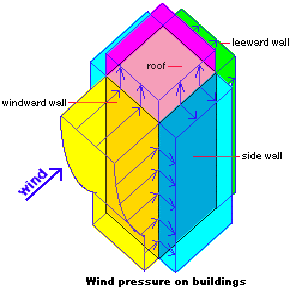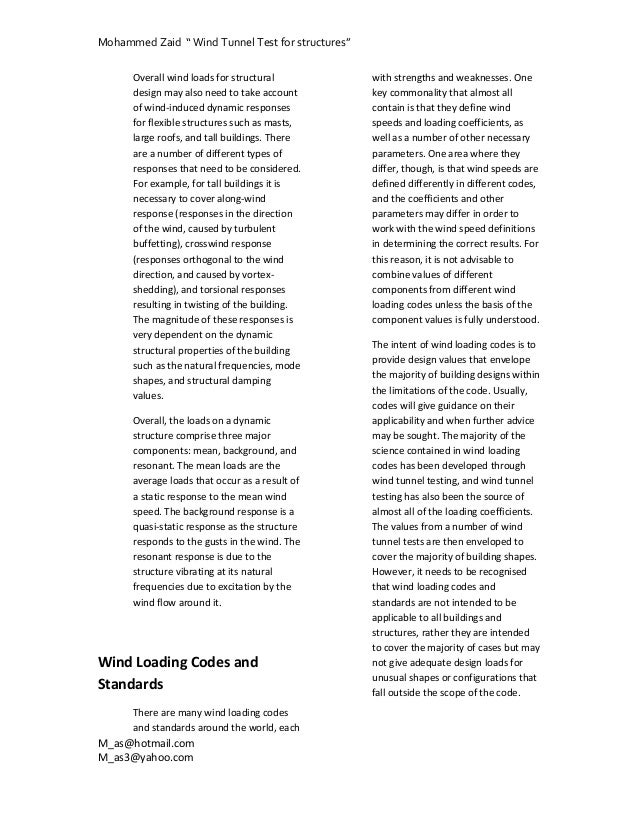Wind engineering#Wind loads on buildings
The wind load is one of the climate-related variable actions on structures or components. It results from the pressure distribution around a building, which is exposed to a wind flow.
They generally acts as a distributed load perpendicular to the working surface and is composed mainly of pressure and suction effects. This results in a building of the locomotive has flocked surfaces by the flow deceleration a positive pressure (wind pressure). In the area of roof and side surfaces, the air flow separates from the building edges and there causes a negative pressure (suction ). Due to the wake vortex, a vacuum is created at the rear of the building also.
Static wind load
In the standards, the wind loads are transferred to calculated values to determine the structural safety. In this case, due to the strong temporal and spatial variations of the pronounced stochastic character is respected.
Location
The relevant factors influencing the size of the wind loads are those of the site with the local wind climate and topography. The wind climate, for example in the standards Euro code 1 or DIN 1055-4 captured by a wind zone map, which indicates time-averaged authoritative wind speeds for different geographical regions. At very high building sites, the wind speeds are adjusted accordingly. The topography and nature of the surrounding terrain on the building site are included in the standards by terrain categories.
The values apply to an averaging over a period of 10 minutes with an exceedance probability of 0.02 within a year and for a height of 10 m above ground in flat, open terrain.
The reference dynamic pressure is calculated from the fundamental value of the reference wind speed at 10 m height with an air density ρ = 1.25 kg / m³ determined. Where
And with m / s and in kN / m
Building geometry
Other important factors arising from the geometry of the structure or component. Thus, the wind velocity at the surface is substantially zero and decreases with increasing distance from the surface, that is, with the building height increases. For simple cases is shown in Table 2 of DIN 1055-4 velocity pressure q compiled for building heights up to 25 meters. In addition to the building height, the geometric shape influenced the magnitude of the pressure and suction forces, which is taken into account with aerodynamic coefficients. The structural geometry parameters may, if no experience documented in the standards exist, are recognized by wind tunnel tests, possibly together with the influence of local buildings.
Wind power
The resulting wind force on a structure or component is derived from the product of velocity pressure, aerodynamic Kraftbeiwerten and building surfaces. The pressure coefficients can theoretically maximum amount to only 1.0 (wind speed before being flown area is zero), but usually vary between 0.6 and 0.8. The Sogbeiwerte are not physically limited in magnitude and can be locally in the area of roof edges eg -2.0 or less. In particular, the suction forces are mostly responsible for wind damage to structures. For example, noise barriers in Germany in accordance with the requirements of the road authorities for a wind load of not less than 1.45 kN / m shall be calculated.
Wind -induced vibrations
The wind loads specified in the standards are equivalent static loads for rigid structures. For soft structures such as suspension bridges, it may be a dynamic interaction in the form of vibrations between the wind and the building. Here wind tunnel tests are usually required to correct detection of the wind as acting on the structure.










